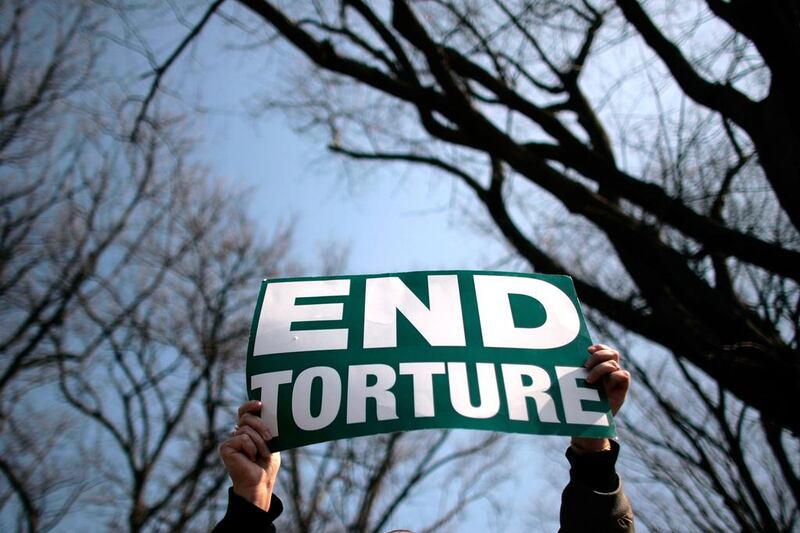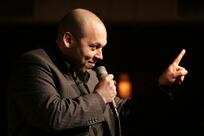“A cloth covers the mouth, water is poured over the cloth to produce a drowning sensation … If the act itself does not change, then it is the same thing, whether we use a euphemism or whether or not the laws written around it have changed. Waterboarding is torture. It was torture when it was used by the Inquisition in 1494 and it was torture when it was used by the CIA in 2003.”
John Schiemann surely had good intentions in writing his new book Does Torture Work? The associate professor of political science at New Jersey's Fairleigh Dickinson University clearly adds his voice to the argument that the so-called "enhanced interrogation techniques" authorised by the administration of US president George W Bush in its "war on terror" were nothing but torture, plain and simple. And it seems commendable that Schiemann should commit himself to demonstrating that torture does not work.
The book is not a general inquiry. Schiemann is not concerned with whether the rack worked well for dungeon masters. Nor does he care whether torture "works" as well on heretics as on spies. Despite touching on the similarities between the methods of various ages, Does Torture Work? is about a very particular type of torture, in very particular circumstances, that is, the "enhanced interrogation techniques" exemplified during the Bush era.
Four out of 10 Americans say such torture would be justified if it were shown to “work”. What does “work” mean? Torture “works”, Schiemann’s argues, when it results in captives divulging information that “helps save lives”.
“It may be that interrogational torture cannot be justified under any circumstances, but if it is to be justified at all, it must be effective,” Schiemann writes. The battle against torture, therefore, is to be waged by demonstrating to those four out of 10 Americans that torture simply isn’t effective.
Sadly, Does Torture Work? is a flawed book, a decent project riddled with holes. Schiemann's basic mistake is in being too focused, building his argument around those specific techniques of "interrogational torture" authorised by the Bush administration. As such, when Schiemann asks whether torture "works" he is, in fact, asking specifically whether isolating a presumed terrorist, hitting him, slamming him into a wall, keeping him awake for days, stuffing him into a little box for hours at a time, bombarding him with noise, waterboarding him, and applying many other "torture lite" techniques will force from him secrets that "help save lives".
Many no doubt find this an acceptable way to frame the issue. However, it is a nonsensical misrepresentation of the problem. “Detainees” are typically – as Schiemann himself well-describes – kidnapped, deprived of legal protections, and brutally confined against their will before they are interrogated. How are these pre-interrogation violations to be justified?
Schiemann accepts that torture can only be justified after the fact, that is, by the value of the information divulged. He must also recognise there is no guarantee that such a justification will be forthcoming – after all, the tortured person could be a mastermind or an ignorant innocent. Torturers can only really hope for the golden secrets that would serve to retroactively justify the torture. When masterminds break under torture, torture has “worked”, the torture has been justified. But can such cases carry a double burden and justify the pointless torture of know-nothings?
Schiemann seems not to have noticed that from the outset he has been sailing towards a very dark Wonderland. Keeping in mind his conclusion – and the idea he’s trying to promote – that torture does not work and is not justifiable, it is simply strange that Schiemann sets-up the wrong problem altogether. He can’t prove torture doesn’t work because he is responding to the wrong problem.
The unfortunate irony is that Does Torture Work? is almost entirely devoted to looking at the question of torture through the mathematical and logical rigour of "game theory".
After considering the kidnapping, the deprivation of legal status, assault, and the captive’s preparation for interrogation, Schiemann asks us to turn to logic puzzles to see the hidden reality of the interrogational torture “game” that’s about to begin. We are asked to consider the scene as consisting of “people (players) who have choices to make, with those choices (strategies) leading to various outcomes, each with its own set of rewards or penalties (payoffs) ... Interrogational torture is not a game in the sense of being fun, but it is a game in this strategic sense”. Could such a claim be made to a room of torture survivors?
"Game theory is a way to describe and think about situations in which two or more people have choices to make." Schiemann insists that game theory does not "reduce" the problem of torture. Rather, he argues game theory models can "represent" the problem of torture in the way a work of art might – for example, Schiemann writes, Vann Nath's paintings done in a Khmer Rouge prison, Palestinian composer Suhail Khoury's "Shabeh" instrumental representation of his torture in an Israeli prison, and Thomas Kennedy's novel In the Company of Angels about a Chilean torture victim. Schiemann seems to miss the point that the power of such works is inseparable from the emotional – not intellectual – response they evoke.
In fact, Schiemann’s game theory treatment of torture gets in the way of the more valuable insights in the book. Schiemann had all the ingredients assembled for what could have been a fascinating ethical critique; he could have investigated the degree to which the debate over “techniques” – for example, whether sleep deprivation should count as torture – actually serves to distract the public’s view from more fundamental questions.
If sleep deprivation is not torture, could the police use it? Why do we insist, even when we think we are facing the brutal realities of torture, on using such euphemisms as “attention grasp, walling, facial hold, insult slap, abdominal slap, cramped confinement, wall standing ... extended use of diapers ...”? If we find that certain techniques cannot be employed domestically and can only be employed in circumstances of “extraordinary rendition”, is torture really the question? Or is the fundamental problem that we feel we can do anything to people once we have made them invisible? If torture is justified – if it “saves lives” – could we torture children if we suspected they had necessary information? Whose children?
What are the implications for society that we understand certain techniques “can cause permanent physical injury or at least permanent physical scars, signs that the body had been tortured at one time. Such evidence is inconvenient in democratic regimes, which are more subject to public monitoring and which make explicit claims to protecting human rights.
As a result, democracies invented … 'clean' or 'stealthy' methods of torture ... designed to accomplish exactly the same goals as the previous methods ... but leave no marks." Does Torture Work? does too little to draw attention to the invisible marks. In fact, it seems to hide them even more.
Caleb Lauer is a freelance journalist based in Turkey.





